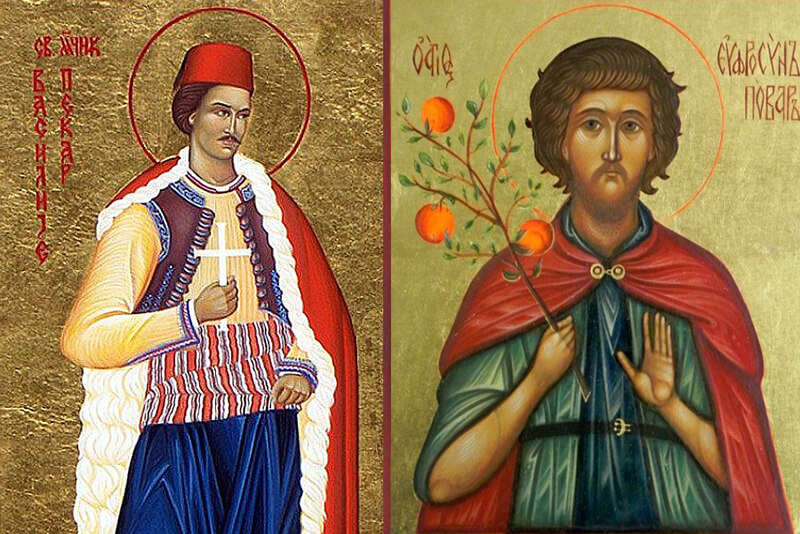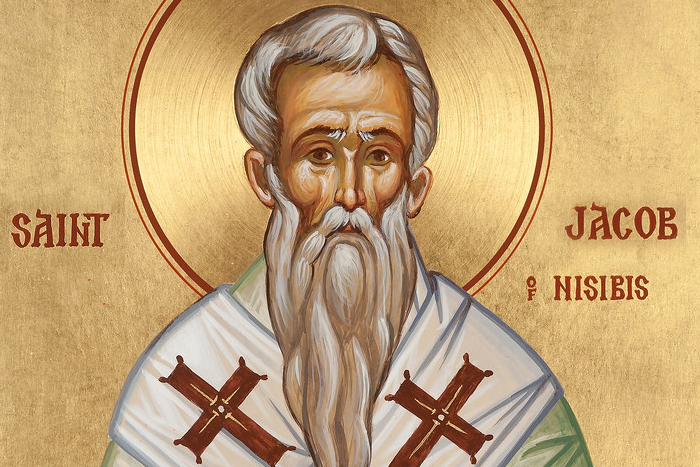
The Holy Church of Christ celebrates the blessed memory of Saint John Chrysostom, our great teacher, confessor, and preacher, on November 26 (November 13 according to Julian calendar). The great John is seen as the beacon of faith and enjoys indisputable authority among all Orthodox Christians. He is venerated in Roman Catholic, Anglican, Lutheran, and Oriental Orthodox churches, too. Many of us know a lot about this great Christian man of faith. Some of us have read his works and homilies. Let us list several facts from his life so as to praise the Lord who acts through His saints.
1. St. John Chrysostom was born in Syria in the great city of Antioch to a noble family. His father Secundus was a high-ranking military officer who died when St. John was a young boy. His mother Anthusa was widowed when she was 20. As a true Christian widow, she decided to not marry again. Instead, she devoted her life to bringing up her son.
2. The great preacher was well-versed in all Greek wisdom, i.e., in all sciences of his day. He attained outstanding mastery in the art of eloquence thanks to his teacher Libanius, a pagan rhetorician. Libanius is supposed to have said on his deathbed that John would have been his successor “if the Christians had not stolen him from us”.
3. The future holy hierarch was baptized as an adult, at the age of about 20, in spite of having been born in a Christian family. Notwithstanding this fact, he was in favor of infant baptism and considered it more suitable for Christian families.
4. John spent about 4 years in extreme asceticism in a desert not far from Antioch. He became a hermit after the death of his mother. He led a stringent and extremely harsh life, as a result of which his stomach and kidneys were permanently damaged, and he is believed to have suffered from gastritis or ulcer.
5. When John returned to Antioch, he was ordained as a deacon and later as a presbyter at the age of 40 and entrusted with preaching the Word of God to the people. That was how the most fruitful period in the creative and public speaking career of this great Christian preacher from Antioch began. It was during that period that most homilies and exegetical works of the talented pastor were written. John would preach daily in front of large crowds. The people nicknamed him Chrysostom, or Gold Mouth, for his exceptional eloquence.

6. St. John Chrysostom knew the Scripture so well that his sermons include ca. 7 thousand Old Testament quotations and 11 thousand New Testament quotations.
7. St. John Chrysostom belonged to the School of Antioch. He knew Theodore of Mopsuestia and studied under Diodore of Tarsus but for some mind-boggling reason managed to avoid the extremes of their school and remained strictly Orthodox in his theology.
8. When St. John Chrysostom was appointed the Archbishop of Constantinople, he had to deal with depravity of the clergy, bribery, lavish social gatherings and enormous spendings of the Church of Constantinople. The holy hierarch fought against those vices, which made him an enemy of many people, especially Empress Eudoxia whom he publicly shamed for her transgressions.
9. St. John Chrysostom believed that you can serve Christ best by being merciful to the poor, for, by giving alms to beggars, we help Christ. That is why he is said to have ordered to sell marble plated meant for decoration of a church, donate the earned money to a hospital and build several new hospitals.
10. A wide coalition of St. John’s opponents, led by Eudoxia and Theophilus, the Archbishop of Alexandria, who wanted to bring Constantinople under his sway and influence the imperial house directly, convened a synod, which resulted in St. John’s deposition, banishment, and exile.
11. St. John was exiled to Pitiunt (Pityus) but never reached this destination, as he died at Comana Pontica on September 14, 407 during the journey due to numerous difficulties during the journey and mistreatment by his guards. When he was dying, he was comforted by an apparition of Martyr Basiliscus near his shrine, took the Holy Eucharist, and reposed in the Lord, his last words being “Glory be to God for all things.” Given that September 14 is the Feast of Exaltation of the Holy Cross, the Church instituted a separate commemoration of this saint on November 13 (November 26), the day when he started his ministry in Constantinople.

12. His relics were transferred to Constantinople in 438. The honorable remains of the saint were transferred to Rome during the 4th Crusade. The relics were placed in a special chapel in St. Peter Cathedral. The relics of St. John Chrysostom and St. Gregory the Theologian were returned to the Orthodox Church of Constantinople by the decree of Pope John Paul II in 2004.
Saint John Chrysostom remains one of the most highly revered Orthodox saints. He left a formidable treasure of homilies and exegeses of the Holy Scripture, as well as several prayers before Holy Communion and prayers used during the Sacrament of Unction. This holy hierarch of Constantinople is also famous for laying out a new rite of the Divine Liturgy based on the ancient anaphora of the Twelve Apostles, which was used in Antioch. The Divine Liturgy of St. John Chrysostom went on to become the most widely used in the Byzantine rite, which makes St. John who created this rite one of the most frequently mentioned saints in Orthodox churches—another case in point emphasizing the uniqueness of this remarkable man of God.
Kontakion — Tone 6
Having received divine grace from heaven, / with your mouth you teach all men to worship one God in Trinity. / All-blest and venerable John Chrysostom, we worthily praise you, / for you are our teacher, revealing things divine!

By John Nichiporuk,
a Bachelor of Theology,
specialized in Biblical Studies.
The Catalog Of Good Deeds, 2018




We are blessed by the lives and works of the saints. We are also blessed by the desire we have to know about them and to emulate them and to pattern our understanding of humility and loving sacrifice upon their lives.